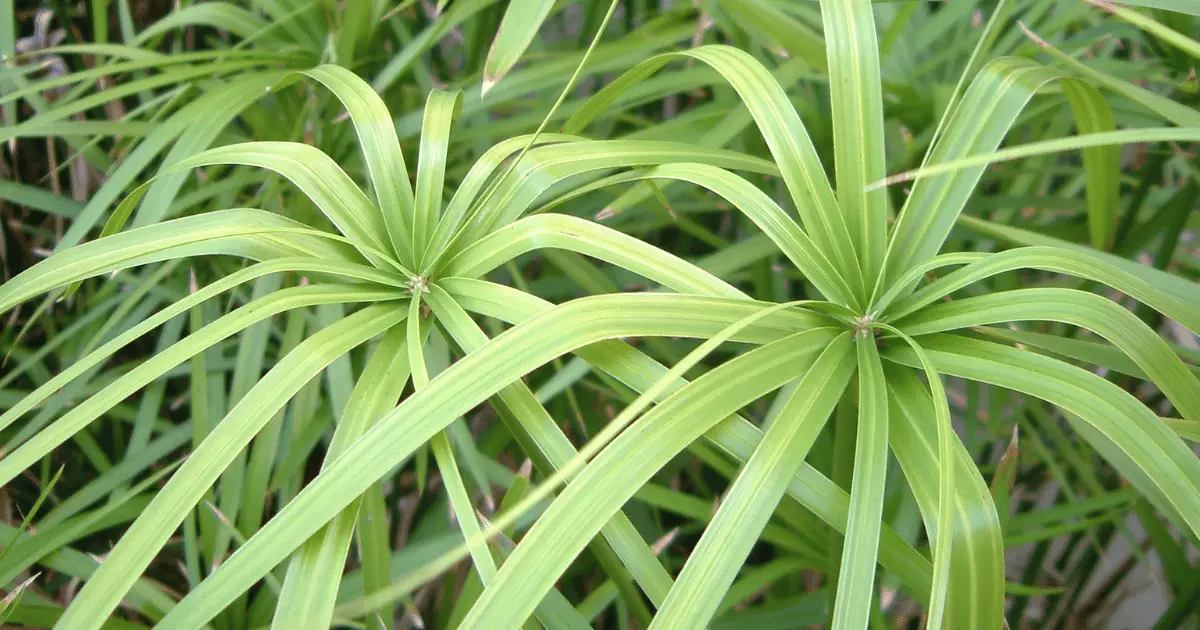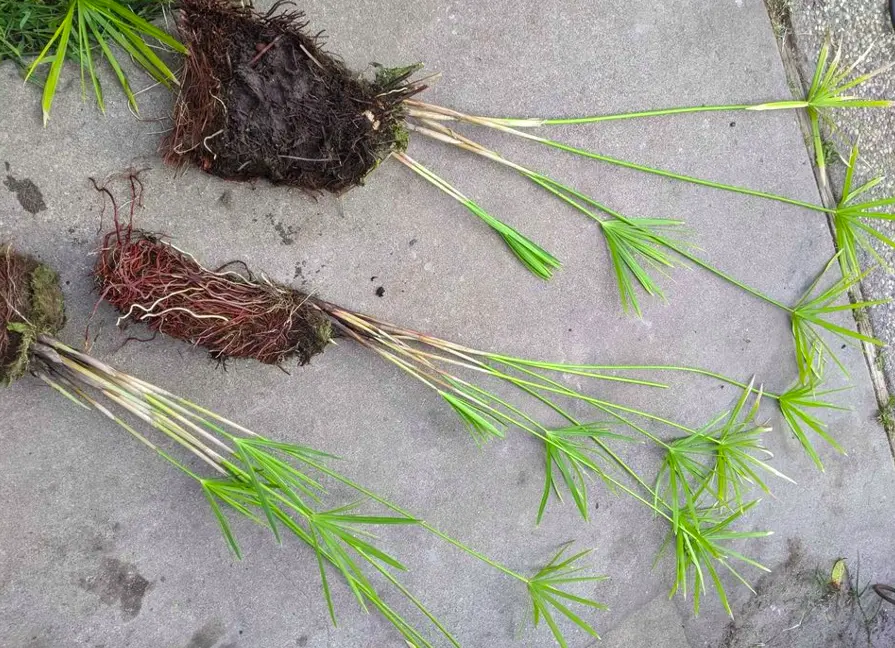Umbrella Plants or Cyperus alternifolius belong to the well-referenced Cyperus genus, a broadly diversified collection of tropical carpeted wild plants originally native to West Africa, Madagascar, and a large portion of the Arabian horn. Still, they are now cultivated in almost every part of the globe.
Umbrella Plants have been called many names, including Umbrella Palm, Umbrella Papyrus, and Umbrella Sedges. They’re well identified by their multiple slender shoots, which project vertically from a root web, with each stem bearing a bunch of evergreen foliage. The entire outline of their shoots closely resembles umbrellas, hence the name.
Propagating Umbrella Plants

Like most other popular garden plants, Umbrella plants need to be propagated almost annually or biennially to maintain their Vigor and overall attractiveness as older pots gradually begin to look sad and worn out as time goes by.
Propagating your Umbrella Plants from stem cuttings is highly encouraged for any expert or first-time propagators, and getting it done is easy. Other ways to propagate them include root divisions or seed germination, and I’ll show you how to go about it in a minute.
First, select the strongest stems with fully grown leaves; cut them off using a pair of scissors or garden knife and ensure each cutting is about 4-6 inches long. At this point, you should pluck off the leaves at the bottom ot each stem, leaving only those on top. If seeds grow on the stems, brush them off too before rooting the cuttings.
Rooting your Umbrella Plant Cuttings in Water

Umbrella Plants will root faster in water, and you don’t require special skills or materials. Just get your rooting container ready: this could be a glass jar, a potting vase, or any other transparent container.
Drop the cuttings in an inverted position, the top edge turned upside down, and place them carefully in the rooting container. Now add some clean natural water to a depth of about 2-3 inches, with the cuttings fully submerged, stem and leaves in water.
Place the set-up on a flat, averagely humid surface with bright indirect sunshine. Your cuttings will start rooting after 2-3 weeks, as long as the water is changed regularly and the atmosphere remains at room temperature. Once your cuttings have grown roots up to 2 inches long, you should transplant them into a pot filled with soil mix to continue growing.
Growing your Umbrella Plants by Seed Germination
Seed-propagated Umbrella Plants usually look identical to the parent plant, so their mostly chosen to replace an older parent stock; other than this, it’s preferable to grow your Umbrella pots by cuttings.
Seed propagation has specific rules to achieve success. First, prepare your pot by splashing some organic compost and moisturising it with a little sprinkle of water. I usually introduce some potting soil mix into the compost for better results to produce a firmer shoot.
Next, place the seeds on a dark, cool, moist surface to germinate. They will only grow shoots when left in a dark room for days. Keep the environment warm and moist, with temperatures around 68°F to 75°F (20°C – 24°C), and they’ll begin to germinate after 7-14 days; you shouldn’t hesitate to transplant them once they grow shoots between 6-8 inches tall.
Propagating Umbrella Plants by Root Division
This simple method of growing new pots can be done in under 10 minutes. It’s best to divide Umbrella pots that have become leggy over time to have younger and fresher pots in their multiplied numbers, but you should wait till the beginning of spring to divide them to avoid being in danger of winter frosts.
I usually like to water the plants thoroughly before dividing them; this makes it less stressful to work with them, especially in getting them out of their pots. You’ll have to gently remove the plant from its pot; however, you can get it out.
If it won’t come out easily, bend the pot sideways and gently roll it back and forth until the plant slips out. We will look for rhizomes attached to the root hairs, forming divisible sections within the roots.
You may need to brush off the dirt and potting soil on the roots to see the sections. Once you identify them and each has fully developed stems and leaves, just cut through the sections to divide the plant using a pair of gardening scissors or a sharp garden knife.
You can now re-pot the divisions in an enriched potting mix, feeding them the right amounts of sunshine and water daily; most divisions grow faster than stem cuttings or seeds, so your young plants will start shooting up after 7-12 days of potting.
Providing the Best Conditions to Grow your Umbrella Plants
Umbrella Plants are not always fussy or demand much attention for their propagation; however, they must be properly cared for if you wish to see them glowing brightly and blooming lavishly in due season. Some factors to ensure are well regulated are the humidity, sunshine, and an enriched soil mix potting.
These tender and fragile garden plants don’t need much direct sunshine to thrive; they always prefer to be kept under shade from the outdoor sunlight. If you’re growing your Umbrella pots indoors, they can be in a brightly illuminated indoor environment.
Great care should be taken to ensure the indoor lighting stays within the expected average; otherwise, they may soon respond by gradually growing awkward stems. A general rule of thumb is to ensure they get a minimum of 4-6 hours of bright light daily to grow healthy and strong.
If you’re wondering where to place your Umbrella pots, the best position would be where it gets enough bright light daily without being exposed to the scorching sunshine, and a northern or western-facing window would be great. Leaving them under direct sunshine for too long will cause the succulent leaves to get sunburned.
Watering your Umbrella Plants
Umbrella Papyrus likes to be potted in an environment with regularly high humidity, and the drier the atmosphere seems, the more their demand for watering. Ensure you water them regularly, so their leaves don’t turn yellowish and droopy. Remember, though; they’ll prefer to remain in an under-watered potting than an over-watered one.
They usually need to be watered more frequently during their active seasons than when they become biologically dormant. They’re most active from spring to summer and should be watered once every one or two weeks, depending on the sun’s brilliance. It’s best always to water them completely only after the top 1-inch layer of the potting soil looks dry.
It would help if you only watered them once every two weeks during winter when they’re mostly resting because they’re at a higher risk of suffering root and leaf rots then. It’s preferable to water them by Misting or spraying during winter when the humidity is quite low; gentle misting on almost a daily basis in summer will keep their leaves fresh and moist.
A major challenge for most gardeners is finding the balance between under-watering and over-watering them. The best way to go is always to observe your plants for signs of such; an over-watered Umbrella plant will begin to look bloated and faded, mostly due to leaching in the soil.
Getting the Best Potting Mix for Umbrella Plants
Your umbrella Plants will be happy and look so if you pot them in the right soil mix. Getting the perfect mix is not a question of skill; it’s simply using the right formula. It would be best if you looked out for a potting mix that’s loose and well-aerated, one that has good drainage and is highly enriched in organic substances.
Using a potting soil sample blended with loamy soil, peat moss, and perlite should be more than adequate for them to flourish, as long as the pH levels remain between 5.5-6.5. A great potting formula for Umbrella Sedges would comprise 40% Succulents potting mix, orchids mix, or cactus mix, 20% organic matter such as compost, 20% peat moss, and 20% perlite.
What’s important is that your homemade potting blend is lightweight, well-aerated, and fast draining so as not to trap water within the roots. You can also augment the percolation and aeration of your potting soil by boring little holes of not more than 50mm all around the sides and bottom of your pots; the holes should be smaller to allow potting soil to sip through.
Although Umbrella Papyrus plants are not as well-mentioned as other similar decorative garden plants, growing and adding them to your collection of houseplants will be worth it; they’re easily adaptable to varying environmental conditions and highly drought resistant.
Direct contact with their sap and leaves can sometimes cause mild toxicity in humans; though they also have several medicinal benefits. Certain Umbrella Plants, such as the Schefflera varieties, can cause vomiting, shakiness, or renal, heart, and breathing complications when consumed.
Some of their beneficial uses include air purification and detoxication. They’re regarded as efficient air purifiers and wonderful antioxidants and possess some promise in antimicrobial and hepatoprotective capabilities.
